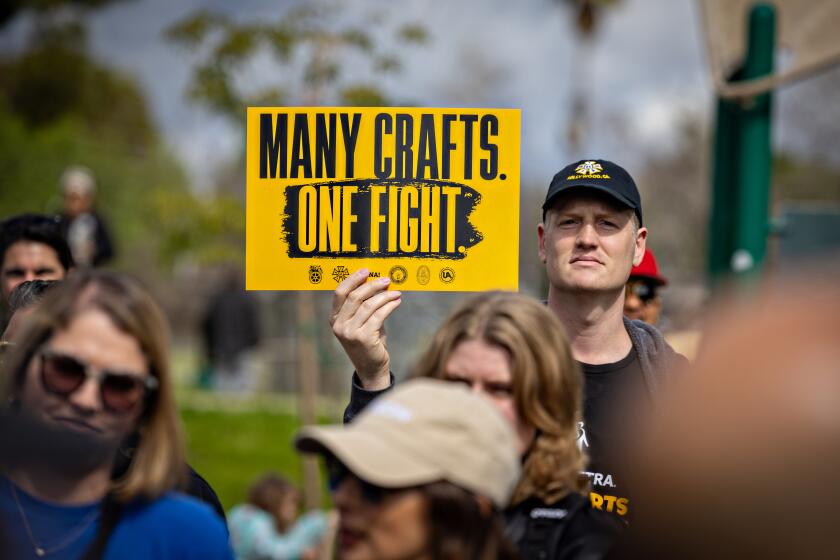Fuel cells popping up in California
Behind a chain-link fence next to a parking structure at an office park in the San Gabriel Valley sit five softly humming gray boxes that could change the way homes and offices are powered.
On Tuesday, the boxes — each somewhat bigger than an SUV — will begin generating enough electricity to power about a quarter of the complex, saving the property owner about $500,000 a year in electricity bills.
The Energy Servers use fuel-cell technology to create low-emission electricity. The product, developed by Bloom Energy, a Sunnyvale, Calif., start-up, has been hailed as an innovation that could change the power industry.
“We were convinced that this was a technology that was extraordinarily good,” said Wayne Ratkovich, chief executive of Ratkovich Co., which owns the Alhambra office park. “And we’re not paying as high of an electric bill, so we’ll save a lot of money.”
Assuming the boxes at the Alhambra do their job, Ratkovich is considering adding five more. And if he does, the new units won’t be hidden behind a fence.
“We’re protecting them for a bit, being a little cautious, because it’s kind of like having a new car,” he said. “But we’d like to set up tours, incorporate them into our front yard. They’re a good sign of what we’re up to here.”
Ratkovich said he may install Bloom boxes at other properties including a Playa Vista complex, the former headquarters of aviation giant Howard Hughes and birthplace of the infamous Spruce Goose airplane.
Ratkovich isn’t alone. Fuel cells are starting to pop up all over California, in breweries, food processing and wastewater treatment plants, grocery stores, hotels, even a casino and a jail. As of November, commercial installations in more than 40 cities statewide are producing about 35 megawatts of power, according to the California Stationary Fuel Cell Collaborative. That’s enough electricity to light up about 35,000 average homes.
The boxes at the Alhambra each produce 100 kilowatts, enough to power about 100 homes.
The Bloom boxes take the oxygen from the air and combine it with fuel such as natural gas in an electrochemical process that produces electricity without using combustion.
Each unit costs up to $800,000, or $4 million for the set. At that rate, Ratkovich Co. could recoup its costs in less than a decade. Each box comes with a 10-year warranty.
So far, Bloom hasn’t had a heavy presence in Southern California. A Wal-Mart store in Lancaster installed a 400-kilowatt system last December, followed by another in Hemet. A Staples store in Ontario has a 300-kilowatt setup.
But many of the high-profile systems are located in the Bay Area: Google Inc. installed a 400-kilowatt set at its Mountain View headquarters and EBay Inc. has a 500-kilowatt group in San Jose.
Bloom plans to have about 100 systems installed by the end of the year. The company may branch out internationally in the future but is currently focusing on delivering a backlog of units in the United States, said Asim Hussain, director of product marketing.
Fuel-cell technology has been around for decades. The astronauts on the Apollo space missions, for example, used it to produce electricity, with drinkable water as a byproduct. But the machines cost millions of dollars a day to operate and didn’t last long.
The materials used to make the cells have since become more durable and affordable, leading to an “explosive” rise in adoption in recent years, said Scott Samuelsen, director of the National Fuel Cell Research Center at UC Irvine.
“California’s always been the initial market for deploying advanced electric generation technologies,” he said. “The traditional ways of generating electricity continue to pollute the atmosphere, and while we’ve been successful in reducing that, we can’t get down to zero with combustion.”
San Diego city officials recently partnered with BioFuels Energy to buy three fuel-cell power plants from FuelCell Energy Inc., which will tap biogas to create clean power for UC San Diego and a municipal water facility.
Commercial and residential consumers are starting to order units from companies such as FuelCell Energy and ClearEdge Power.
The fuel cells sold by ClearEdge produce about 5 kilowatts of electricity, cost around $56,000 each and have a 20-year estimated life. Buyers are eligible for tens of thousands of dollars in government rebates and tax incentives. CEO Russell Ford says he expects to sell 1,000 units and make a profit in 2011. The company, which has locations in California and Oregon, is stepping up its manufacturing.
“It won’t be long before someone asks what life was like before fuel cells the same way they do about microwaves and cellphones,” Ford said.







